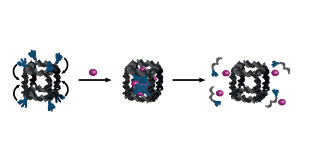Imagine a
clock precise to one second in a period comparable to the age of the universe
(more than 13 billion years).
That’s what
National Institute of Standards and Technology (NIST) scientists have built,
with funding from DARPA’s Quantum-Assisted Sensing and Readout (QuASAR)
program: two optical lattice clocks that use ultracold ytterbium atoms to
measure the passage of time.
The
ytterbium clocks tick off seconds by measuring the frequency of light absorbed
by atoms as electrons in the ground state jump to an excited state. Each of the
clocks relies on approximately 10,000 rare-earth ytterbium atoms cooled to ten
millionths of a degree above absolute zero and trapped in an optical lattice
made of laser light.
Another
laser provides the resonant energy necessary for the atoms to cycle between two
energy levels a rate of 518 trillion times per second (518 terahertz),
achieving timekeeping precision of one part in 1018.
That’s
10,000 times better than the current atomic clocks used to support GPS
satellites. This extreme stability could vastly extend the time between GPS
clock updates and may block attempts by an adversary to spoof GPS signals.
Such clock
precision could also enable more precise methods to measure gravity, magnetic
fields, and temperature.
http://www.darpa.mil/NewsEvents/Releases/2013/08/29.aspx




































